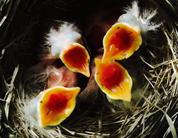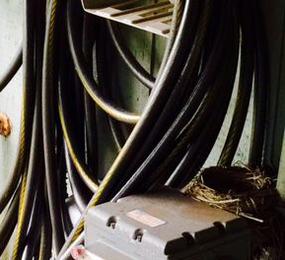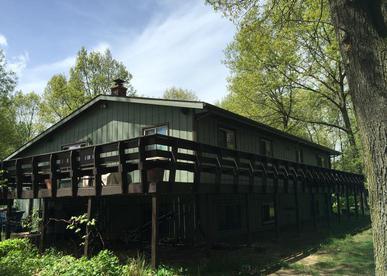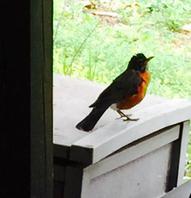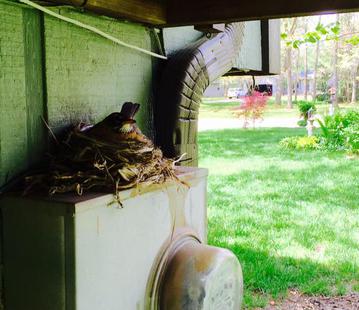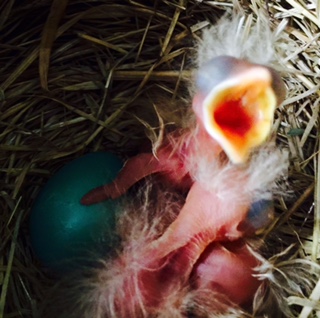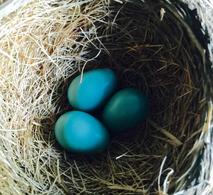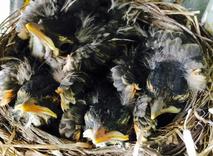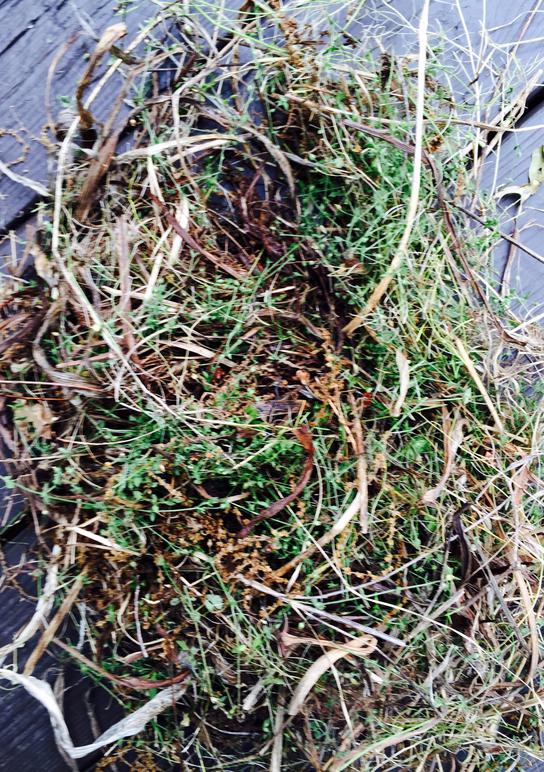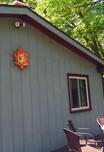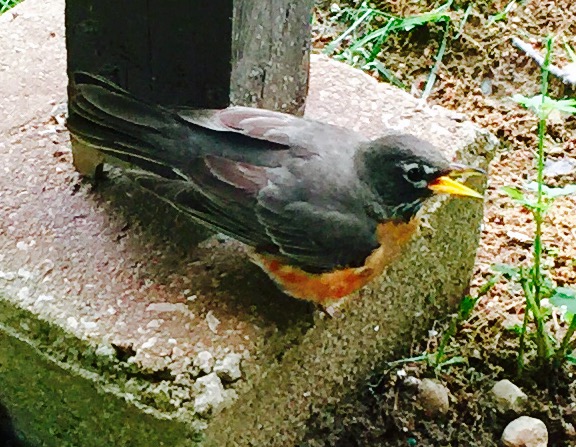 | ||||
American Robin Nestling Development
Photos of Baby Robins from Eggs to Fledgling
Article Summary: Photo record documenting the development of broods of American robins, nesting in the suburban yard of a southwest Michigan home.
Every year American robins nest under the deck of our suburban southwest Michigan home. We watch nests succeed and fail, but, in the past, have never documented development of the chicks. This spring, of 2015, we are photo-documenting two nests.
American Robin Chick Development (Egg to Fledgeling)
SPO VIRTUAL CLASSROOMS
 | ||||||
Page last updated 4/2016
Location of the Nests
Our home is in Kalamazoo, southwest Michigan. The neighborhood is located in what used to be an old oak forest, and still has many red oak trees.
American Robin Broods We're Tracking for 2015
Betty's nest
Wilma's nest
We are careful not to disturb the nest or chicks, and visit the nests briefly, just long enough to snap a photo.
Check back frequently, and Like Us on Facebook to follow the chicks development!
We have many photos of the two nests we are following. If you would like to skip the general information below, and see the brood locations, click on one the the following links:
About American Robins
Both the mother and the father American robin guard and feed their young. Only the female sits on (broods) the nest. They typically tend 3 - 5 light blue eggs in a clutch, and can raise 1 - 3 broods per year. Eggs take about two weeks to incubate before hatching, and nestlings leave the nest approximately two weeks after hatching.
American Robin
Nesting Facts
Scientific name:
Turdus migratorius
# eggs in clutch: 3 - 5
# clutches: 1 - 3
incubation of eggs:
~2 weeks
nestlings fledge:
~2 weeks
In the spring/summer of 2015, we had two pairs of robins nesting in our yard, beneath our home's outdoor wrap-around deck. The deck is 59 inches (149.9cm) off the ground.
American robin female guarding her nest. We have named her "Betty". She is easily recognizable due to a notch in the feathers on her head. Betty has a shy mate, that we don't see as often. We've named him "Barney."
Wilma's Nest: Under side portion of deck, facing north, 45 inches (114.3 cm) above the ground, built on top of the home's electric meter. Many nests in this location have failed in the past. The nest is near a bird feeding area, and is very visible.
American robin female, Wilma, on her nest. She is fearless, and does not abandon the nest until I am very close.
 | ||||
Young children are natural born scientists, full of curiosity! Join the at-home experiments and explorations of a scientist mom & her kids.
Betty & Barney's Chicks Day of Hatching!
Wilma's 1st Clutch of Eggs Hatched Week of 5/24
Betty's 1st Nest: Under the back portion of deck, facing east, 29 inches (73.6 cm) above the ground, built on top of the home's gas meter. I do not recall past nests in this location.
Although we may have discouraged the building of nests here, as it is a very busy location, next to the outdoor faucet and the back door to garage. The nest is tucked away, and pretty well hidden, but low to the ground.
Betty's Chicks
11 Days Old
Don't robin nestlings look like Grandpa, from The Munsters?
Discouraging Robins from Building Nests
There are a couple of locations, both above security lights, where we have to discourage robins from building nests. Both are high traffic areas.
As soon as we see a nest being built in either of these places, we knock it down, before eggs are laid. Nest building can be prevented in this type of location by placing a flower pot upside down on top of the light fixture.
Nest materials include a mixture of living and dead plant material, all stuck together with mud. Putting a upside down pot on top of the light fixture also discourages robins from building their nests in that location.
More Information on the American Robin
- American Robin Page from Journey North
- American Robin, All About Birds from Cornell Lab of Ornithology
- Nest Watch from Cornell University.
- American Robin, Audubon field Guide
Cornell Ornithology Lab recommends that, when monitoring a nest, you check it only every 3 - 4 days, to minimize disrupting the birds and to avoid attracting predators. At SPO, we do check our nests more often, to get photos for science education. Visit the Cornell Ornithology Nest Watch website to learn how to observe nests safely.
"Sometimes American robins will build multiple nests, as decoys, to fool predators."
- Alicia Cepaitis,
SPO Chief Creative Nerd & Ornithologist at large
American Robin
Alarm Call!
Listen to the alarm calls and attack from Wilma and Fred, as I approach to take photos of nest.
 | ||||
American Robin
Pages
While robin chicks are growing, they generate a lot of poop. But the parents are able to keep the nest clean because, immediately after being fed, a baby robin shoots out a "fecal sac"; poop packaged in a strong mucus bag that the parent grabs with its beak and removes from the nest area.
When the chicks are newly hatched, they don't do a good job of digesting their food, and the parents will often eat these early fecal sacs because the babies' waste contains a lot of undigested nutrients. Eeeew!
American robin female "Wilma" tending her first nest of the 2015 season.
